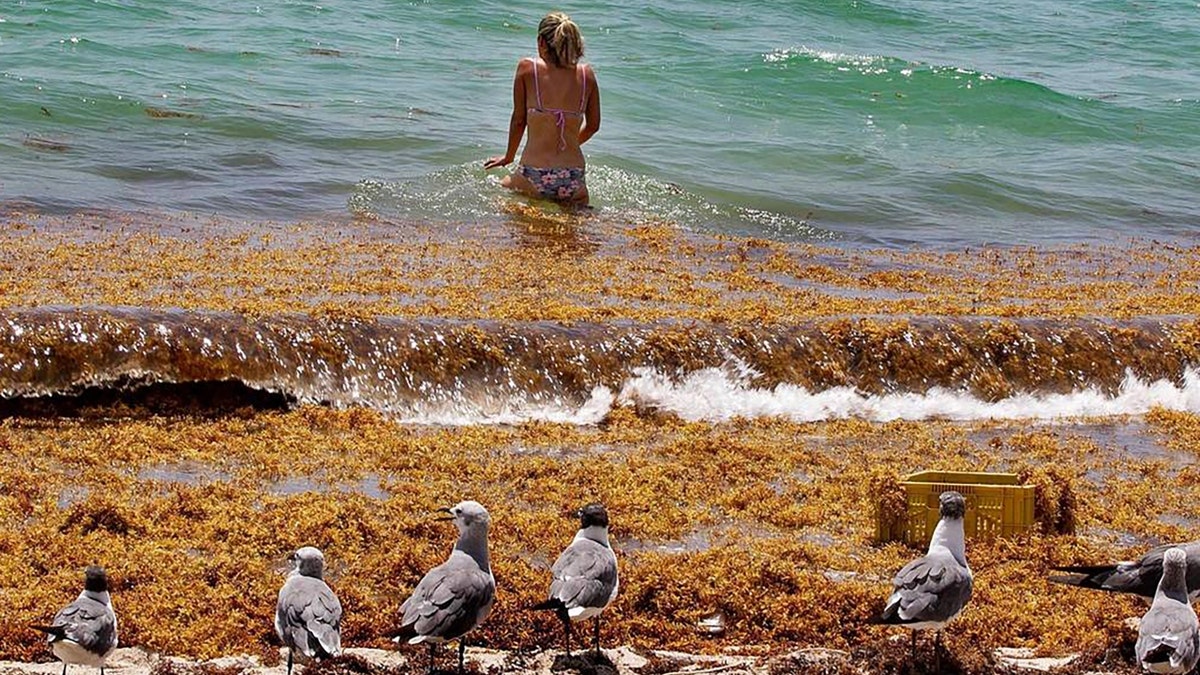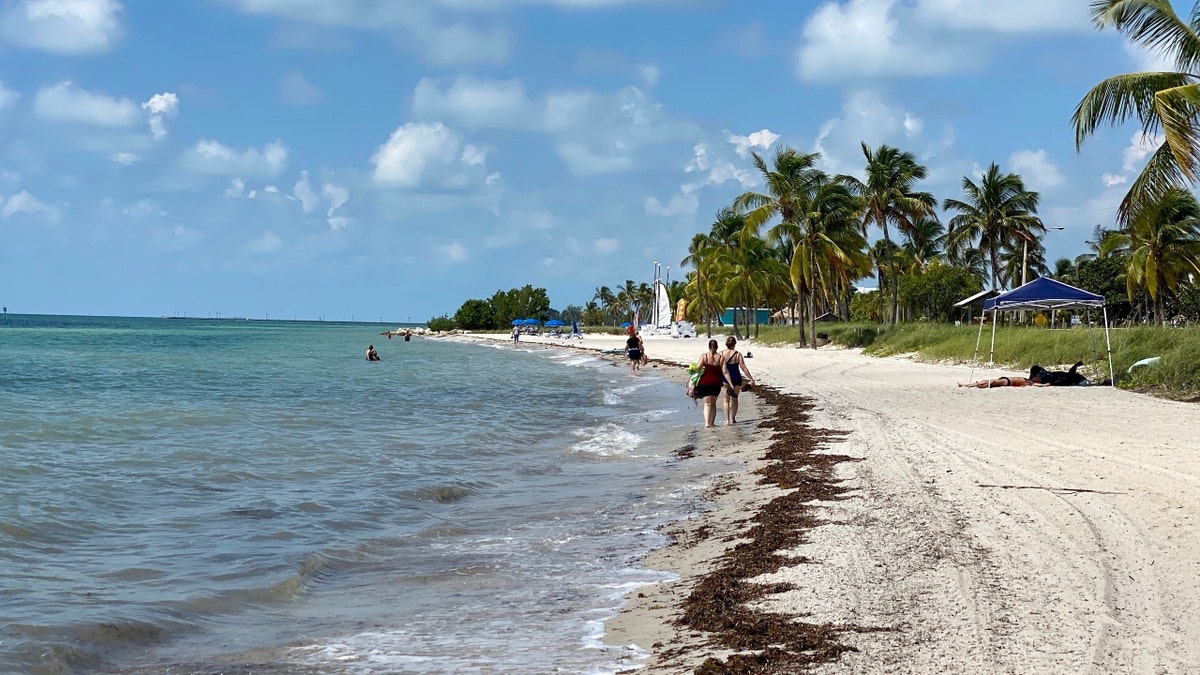11-foot great white shark pings off Florida coast
According to OCEARCH’s Global Shark Tracker, the shark named Maple pinged southeast of St. George Island, Florida, in the Gulf of Mexico on Monday morning. (OCEARCH)
A massive seaweed bloom may be heading toward Florida's Gulf Coast, bringing harmful impacts for humans and marine ecosystems alike.
Sargassum is a blob of brown seaweed and, at around 5,000 miles wide, the bloom is twice the width of the U.S.
While the thick mat of macroalgae can provide a habitat for migratory marine life and absorb carbon dioxide, it can also threaten coastal inhabitants.
The Florida Department of Health notes that it gives off a substance called hydrogen sulfide when it rots.
GIANT BLOB OF SEAWEED TWICE THE WIDTH OF US TAKING AIM AT FLORIDA, SCIENTISTS SAY

Monica Madrigal finds her way to the ocean through a thick raft of Sargassum seaweed that washed up on the seashore by the 71st Street area in Miami Beach in 2020. (Pedro Portal/Miami Herald/Tribune News Service via Getty Images)
Hydrogen sulfide can irritate the eyes, and residents may have trouble breathing after inhaling it. While the algae itself does not sting or cause rashes, tiny organism like larvae of jellyfish may irritate the skin.
Do not use sargassum in cooking, as it may contain large amounts of heavy metals like arsenic and cadmium.
Hydrogen sulfide is not known to cause cancer in humans. However, those who are exposed for a long time in an enclosed space can be impacted. Hydrogen sulfide levels in places like the beach are not expected to harm health.
People can protect themselves by avoiding touching or swimming near seaweed, using gloves to handle it, closing windows and doors if you live near the beach, and limiting time there if a person has asthma or other respiratory problems.

An aerial view of public beach restoration in Miami Beach, Florida, with sargassum, smelly seaweed that's been traversing the Atlantic Ocean in massive clumps. (Jeffrey Greenberg/Universal Images Group via Getty Images)
If workers are collecting and transporting the algae, they should wear protective clothing.
While sargassum provides an important habitat for migratory organisms – including for wildlife in the Sargasso Sea, where it is naturally abundant – the blooms can choke coastal waters, depriving coral of sunlight.

Sargassum, a seaweed-like algae, collects on a beach in Key West, Florida, on Sept. 18, 2020. (Daniel Slim/AFP via Getty Images)
The red-brown seaweed has piled up on sands, blocking turtles' path to nesting grounds. Last summer, the most immediate threat was to beach tourism.
Scientists began to observe the seaweed in a belt from West Africa to the Caribbean Sea and Gulf of Mexico in 2011, according to NASA.
"This is all ultimately related to climate change, as climate affects precipitation and ocean circulation and even human activities [that can lead to sargassum blooms], but what we’ve shown is that these blooms do not occur because of increased water temperature," Chuanmin Hu, of the USF College of Marine Science, said in a statement. "They are probably here to stay."
Fox News' Bradford Betz contributed to this report.





















